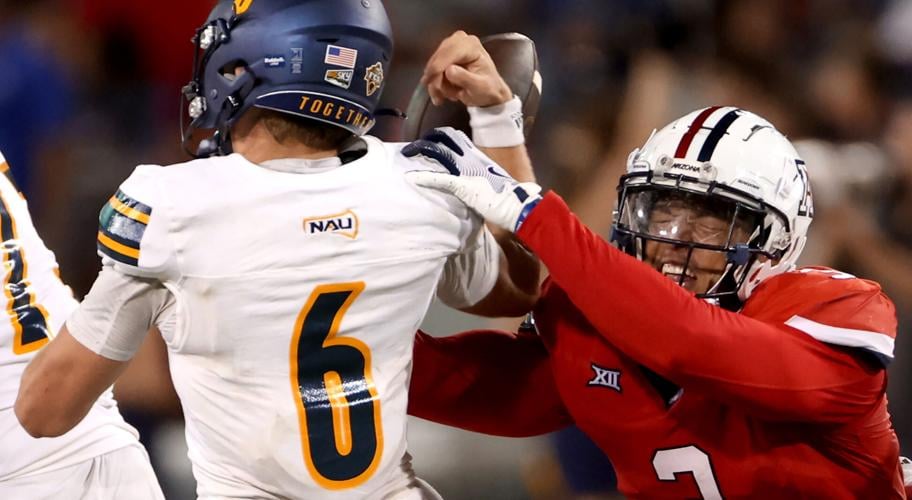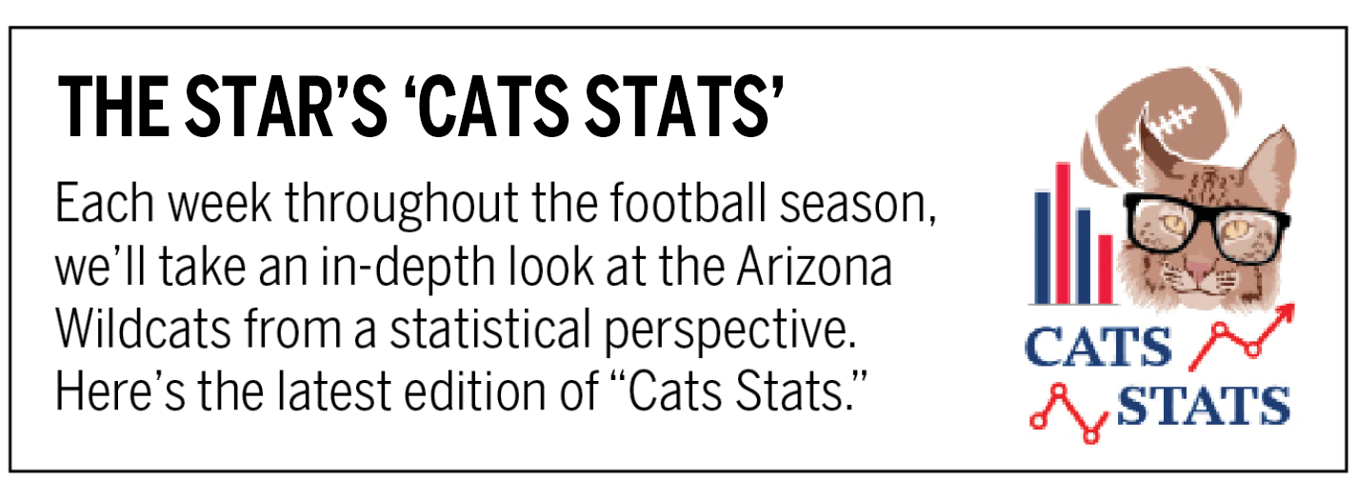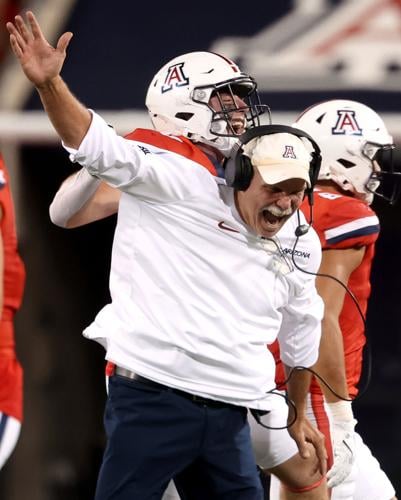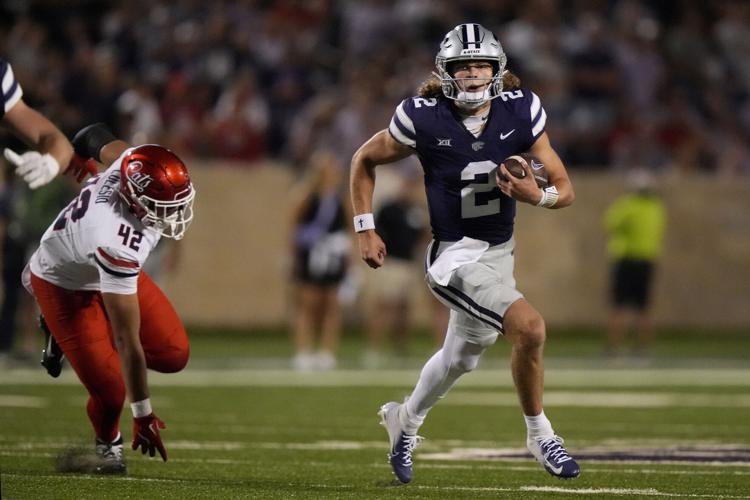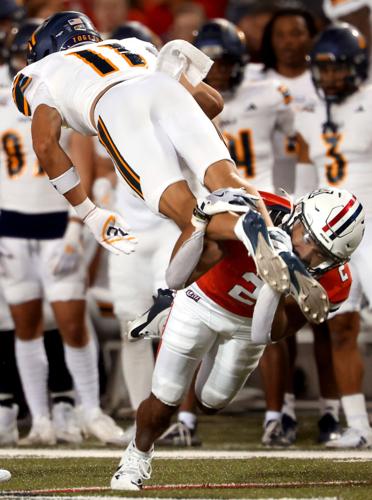After a disappointing performance at Kansas State — followed by a bye week to wallow in the despair — the perception of the 2024 Arizona Wildcats took a turn.
From Top 25 team to problematic program, just like that.
Arizona’s offense couldn’t move the ball consistently. Its defense couldn’t stop the run. Its special teams couldn’t cover a punt.
None of the above is untrue. But the idea that the Wildcats are irrevocably flawed is a stretch.

What if we told you that Duane Akina’s defense isn’t that bad? That it’s actually just bad at one particular thing and pretty decent otherwise?
That’s the case we’re going to make in this week’s “Cats Stats” as Arizona prepares to visit No. 10 Utah on Saturday.
It’s an indisputable fact that the Wildcats have struggled to contain mobile quarterbacks.
People are also reading…
New Mexico’s Devon Dampier darted through the UA defense for 130 rushing yards in the season opener. In three other games this year, Dampier has 132 yards.

Kansas State quarterback Avery Johnson gets past Arizona defensive lineman Dominic Lolesio, left, during the second half of their Sept. 13 matchup in Manhattan, Kansas.
Two weeks later, Kansas State’s Avery Johnson bulldozed his way to 110 yards on the ground. He’s had 151 yards in KSU’s three other contests.
Dampier and Johnson combined to average 120 rushing yards per game and 7.5 per carry vs. Arizona. If you take sacks out of the mix, all other rushers average 109.3 yards per game and 4.6 per carry against the Wildcats. Those are respectable numbers. Last year’s much-improved UA run defense yielded 118.2 yards per game and 3.6 per carry.
Of course, you can’t just exclude and ignore the QB rushing output. It’s part of Arizona’s statistical profile, and dual-threat quarterbacks are prevalent across college football. But the notion that opponents have regularly gashed the Wildcats with traditional rushing attacks is misleading.
What if we also told you that Arizona’s overall defense has been respectable aside from the first half of the first game?
That first half vs. New Mexico was a borderline disaster. The Wildcats surrendered 24 points and an astonishing 305 yards. They allowed less in three entire games last season (and yielded 306 and 307 yards in two other contests). The Lobos also averaged 7.3 yards per play.

Arizona defensive end Tre Smith, right, hits Northern Arizona quarterback Ty Pennington, forcing a fumble the Wildcats would recover late in the fourth quarter of their matchup on Sept. 7 at Arizona Stadium.
The second half was much better: 15 points, 166 yards, 4.4 yards per play.
The defense won the NAU game. Not only did the unit limit the Lumberjacks to 10 points, 198 total yards and 3.5 yards per play, but it also scored two points via a safety in a game that had a final tally of 22-10.
What about Kansas State, though? That wasn’t exactly a stellar defensive outing.
It was not. But the defense itself allowed only 24 points. The other seven came on a punt return.
Twenty-four points is a reasonable total in modern college football. If they had allowed 24 points in every game last season, the Wildcats would have won 10 games. (They did, in fact, win 10 games.)
Now, it is fair to argue that Kansas State could have, and probably should have, scored more than it did. One KSU possession ended with a missed 48-yard field goal, and another concluded with Johnson losing track of the clock and allowing it to expire at the end of the first half.

Arizona defensive coordinator Duane Akina celebrates with defensive back Owen Goss after the Wildcats made a fourth-down stand against Northern Arizona in the fourth quarter of their game at Arizona Stadium on Sept. 7.
Counterpoint: Almost any drive that ends with a field goal attempt — whether it’s good or not — is a “win” for the defense. And the bottom line remains the same: The amount of points Arizona allowed would be sufficient to win most college football games.
What if we further told you that the Wildcats have played mostly solid defense despite missing some key pieces?
Arizona’s “Three Amigos” — defensive backs Dalton Johnson, Gunner Maldonado and Treydan Stukes, who announced their return to ����APPfor the 2024 season in the in January — basically have been together for one half of football this season.
Maldonado got hurt in the second half of the opener, playing only 45 of 84 snaps. He missed the NAU game before returning for KSU.
Johnson got hurt against NAU, playing only 27 of 57 snaps. He missed the KSU game. He’s expected to return against Utah.
Stukes got hurt in the second half against KSU. His replacement, Owen Goss, really struggled.

Arizona defensive back Treydan Stukes, right, wraps up Northern Arizona wide receiver Kolbe Katsis as he tries to dive for more yardage on a sweep in the second quarter of their game at Arizona Stadium on Sept. 7.
Stukes’ status for Utah is unclear. Arizona has a very capable sixth defensive back in Genesis Smith. But when two of the Three Amigos are missing — as was the case in the late going against KSU — it’s difficult to overcome.
Of course, that one half when they were all together just so happened to be the first half vs. New Mexico — the worst half the defense has played all season. Counterpoint: The defensive front — in particular the edge players — was mostly to blame for Dampier running wild.
Now, none of this is to say that Arizona’s defense is on the same level as Utah’s. The two might not be in the same solar system.
The Utes rank in the top six in in scoring defense (third), total defense (second), rushing defense (fourth) and passing defense (sixth). They lead the league in third-down defense (23.3%) and are tied for first in sacks (12) and interceptions (five).
Arizona ranks no better than seventh (passing defense) in any of those categories and is 11th or worse in six of them. So yes, clearly, improvement is needed.
But if the UA defense can shore up its biggest weakness — edge containment vs. mobile quarterbacks — the overall picture might not look so bleak.















